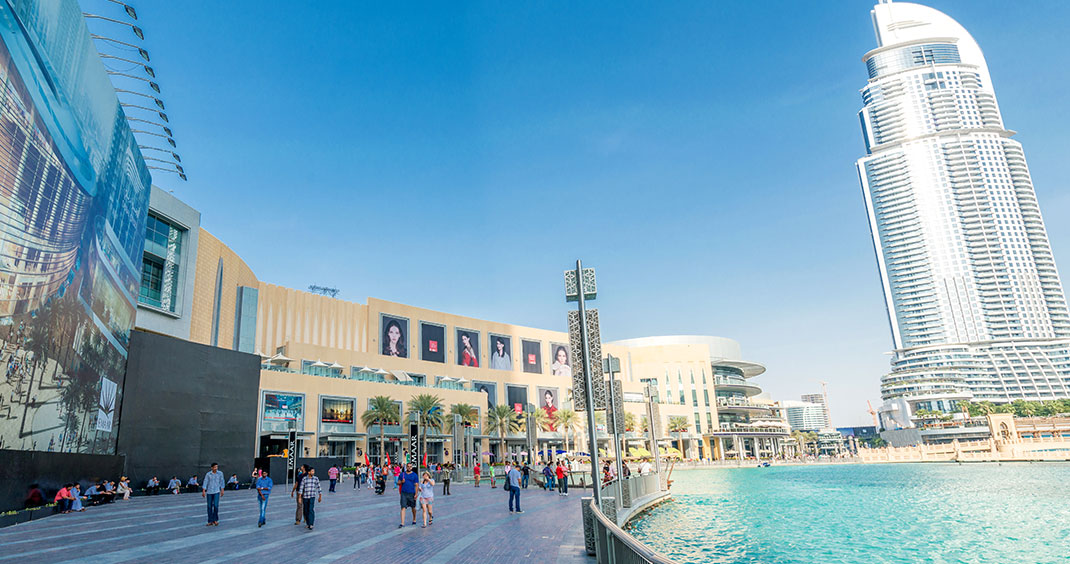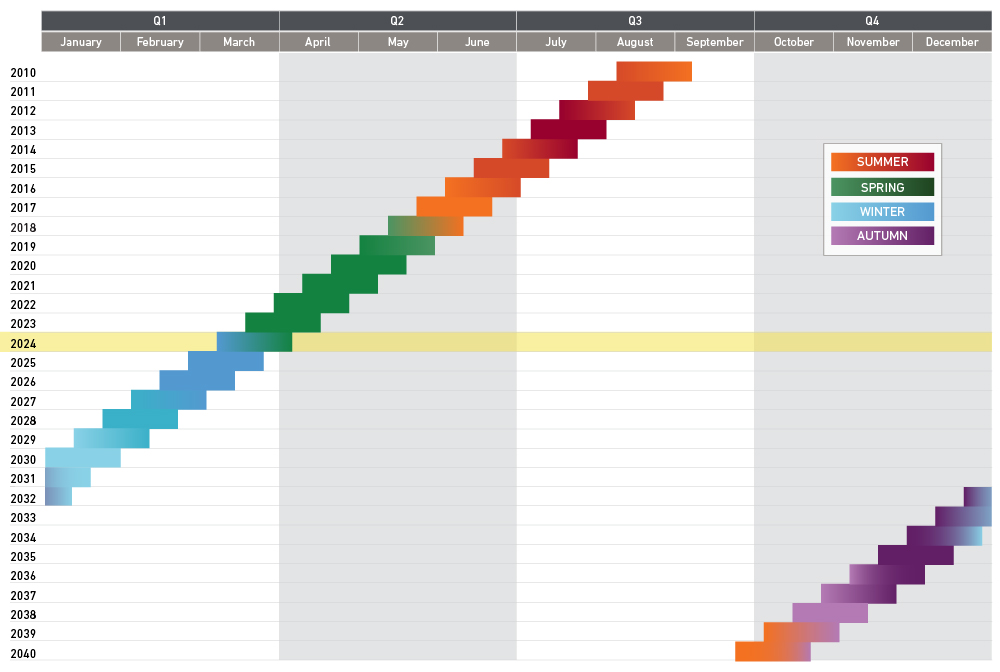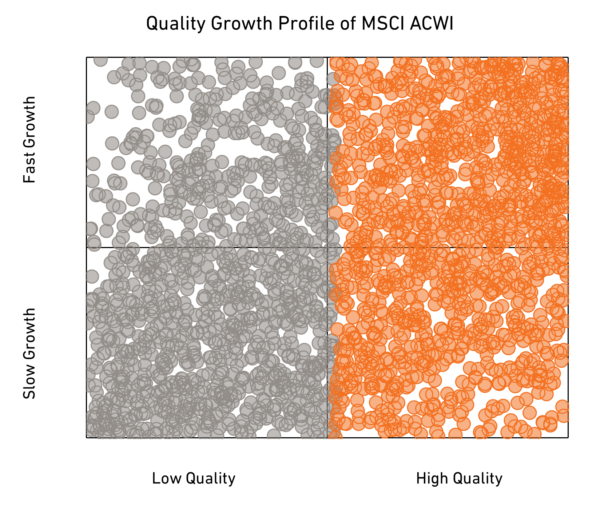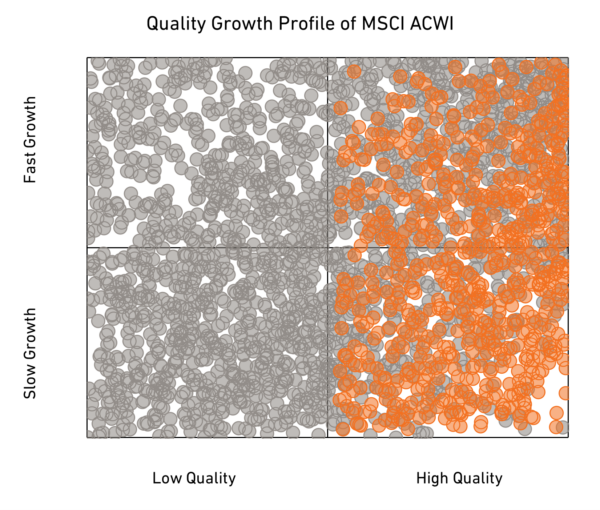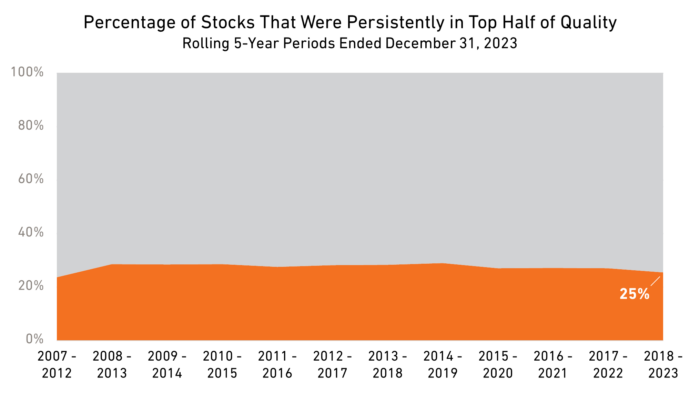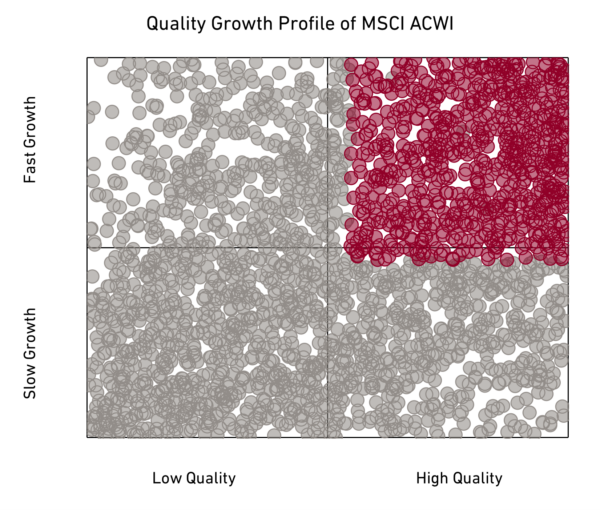As generative artificial intelligence (AI) captures investors’ curiosity, Amazon’s AWS web-services division has been in the spotlight. How the performance of AWS is affected by the growth in AI is important because even though the business accounts for less than 20% of Amazon’s overall revenue, it has been the source of most of the company’s profits in recent years.
But with so much focus on AI, what is perhaps under-appreciated is that Amazon’s e-commerce business recently underwent a transformation of its own—a rethinking of how it gets customers’ packages from point A to point B. Because of this new strategy, the business, where profitability has been low and erratic, may be on the cusp of a new era in which margins finally reach—and sustain—an attractive level.
During 2023, Amazon overhauled the sprawling US logistics network that supports its online-retail operations, switching from a national system for filling and routing orders to a regional setup. The core change was to partition the US into eight main regions, assigning each region dedicated fulfillment warehouses, sorting centers, last-mile delivery hubs, and vehicles. By limiting the area each facility serves, the company doesn’t need as many connecting points along its distribution routes, and trucks are filled closer to their capacity and travel shorter distances. This helps Amazon save money on fuel, fleet upkeep, labor, and other overhead, as well as potentially reduce its environmental impact.
Amazon’s latest financial report in February revealed that fulfillment costs, which had soared to 16.4% of net sales in 2022, shrank to 15.8% of net sales in 2023 as the new system was implemented. As the chart below shows, it was only the second time in 14 years that this metric’s long ascension was interrupted. This time, we view it as an inflection point, and so the downward trend should continue.
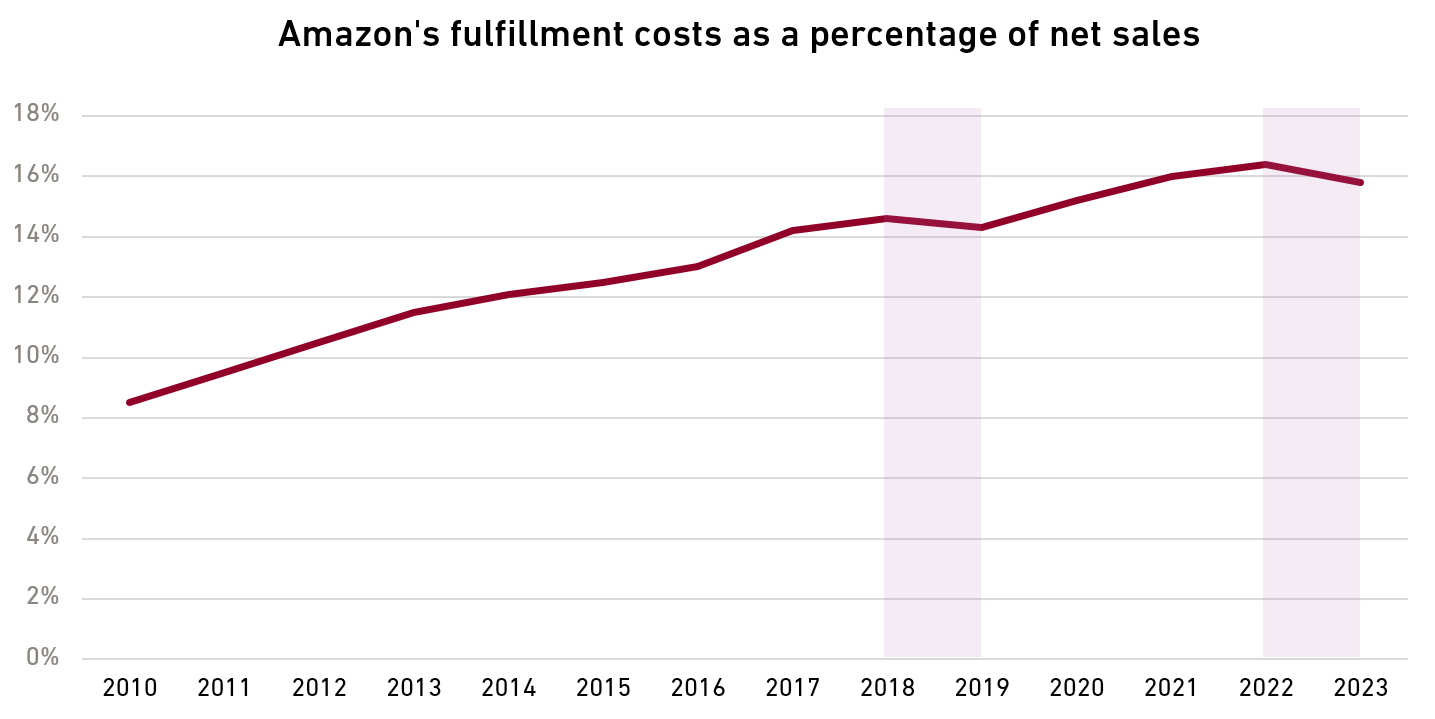
Source: Amazon filings
The company’s filings don’t separate fulfillment-center square footage from the company’s data centers and other owned and leased properties, but according to the commercial real-estate database CoStar, Amazon reduced its distribution space by more than 14 million square feet between July 2022 and October 2023. In September 2023 and October 2023 alone, it listed roughly 2 million square feet of industrial space for sublease, including large facilities in the Atlanta area, as well as San Antonio and Fort Worth.
In the early days of the COVID-19 pandemic, to keep up with a surge in consumer demand, Amazon aggressively added fulfillment centers—some the size of a dozen or more football fields. Since then, however, e-commerce growth has slowed, and as Chief Executive Officer Andy Jassy looked to slash costs throughout the company, overhauling the distribution system became a top priority. A particular inefficiency in the old system had also gnawed at the company’s leaders; the problem would arise when a customer’s order couldn’t be completed by nearby warehouses, at which point the fulfillment method would turn scattershot. It meant that something as inconsequential as a storage basket or phone case could travel long distances from a random warehouse in a half-empty truck.
The new approach helps avoid that costly conundrum by enabling most orders to be filled by warehouses in the same region as the recipient. By the middle of last year, more than three-quarters of orders were being handled this way, up from 62% previously. Additionally, with fewer warehouses feeding into each region, the company is reducing its use of intermediate sorting centers and able to send more packages directly to delivery hubs, where they get loaded onto delivery vehicles. The efficiency gains not only facilitate faster shipping but also the ability to offer lower-priced goods. That combination may further incentivize shoppers to turn to Amazon more often.
While Jassy has said that the company has more room to fine-tune its distribution system, margins are already moving in the right direction. The North America e-commerce operation generated an operating margin of 6.1% in the final period of 2023, the widest since the first quarter of 2019—although that period was itself an outlier. (For the past decade, the North America operation has earned, on average, just three cents of operating profit for every dollar of sales.) We estimate that the operating margin in North America could climb to 8% or higher over the next few years and, most importantly, sustain high single digits over the long term.
Meanwhile, Amazon’s international e-commerce operations, which are still in early stages in many countries, are operating at a loss as the company uses Prime benefits to entice local shoppers. But as Amazon achieves distribution scale abroad and implements what it has learned in the US, we expect the international business to become profitable, with its operating margin rising toward 5% over the next few years.
Our investment thesis about Amazon largely rests on three factors. One is AWS maintaining its strong margins and industry leadership, which we expect because it operates in a favorable industry structure. Another is Amazon capitalizing on the unique data it captures on shoppers’ intentions to support the continued rapid growth of its US$50 billion digital-advertising division. The last key piece is whether the alchemy of running such a sprawling e-commerce business can be managed in such a way that it produces sustainably high margins while retaining its leading global market share. There are now signs that it can, in which case, investors are about to see a different Amazon.
Investment insights contributed by Peter Baughan, CFA, Analyst and Portfolio Manager
Image source: Chad Robertson – stock.adobe.com.





